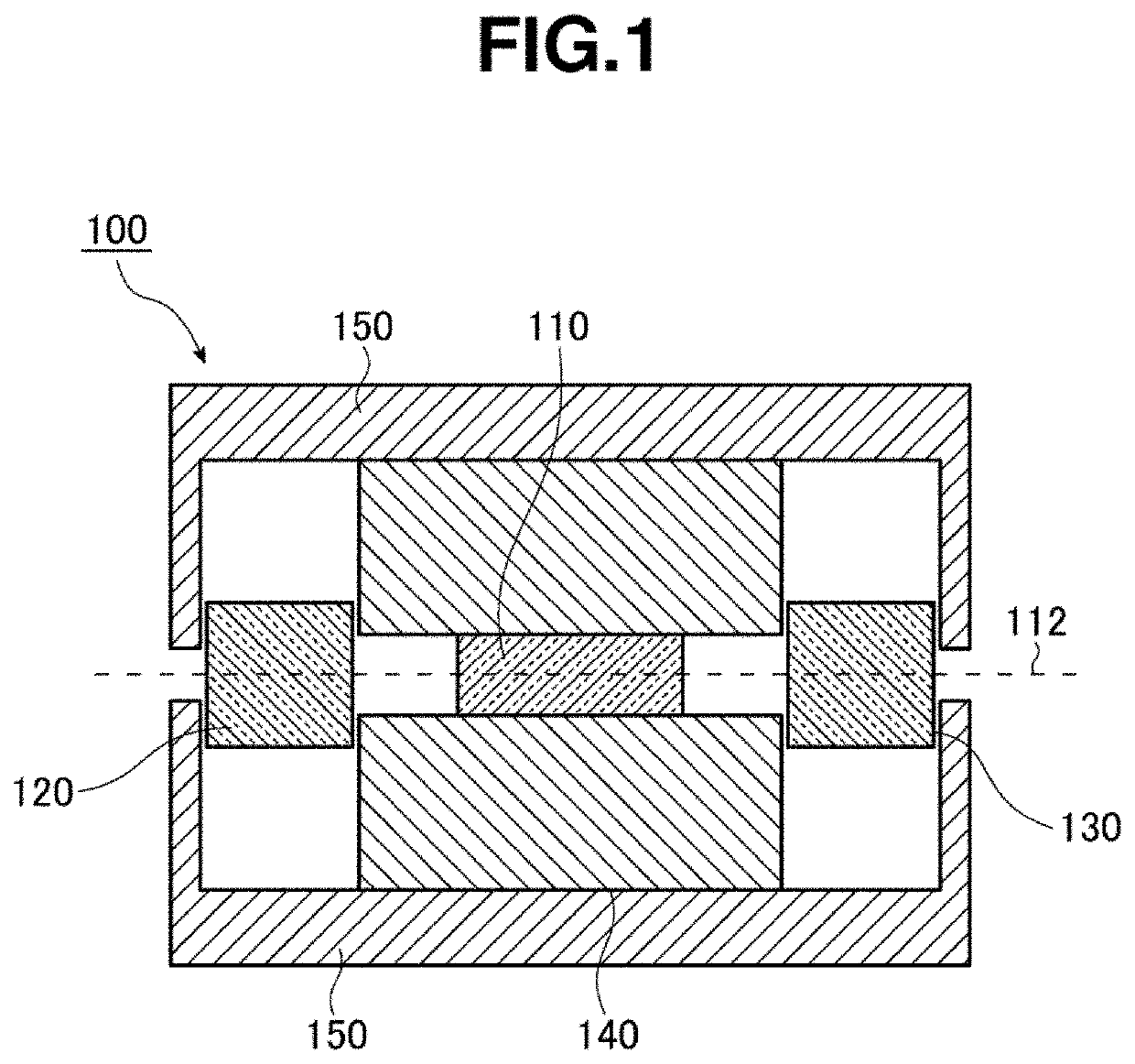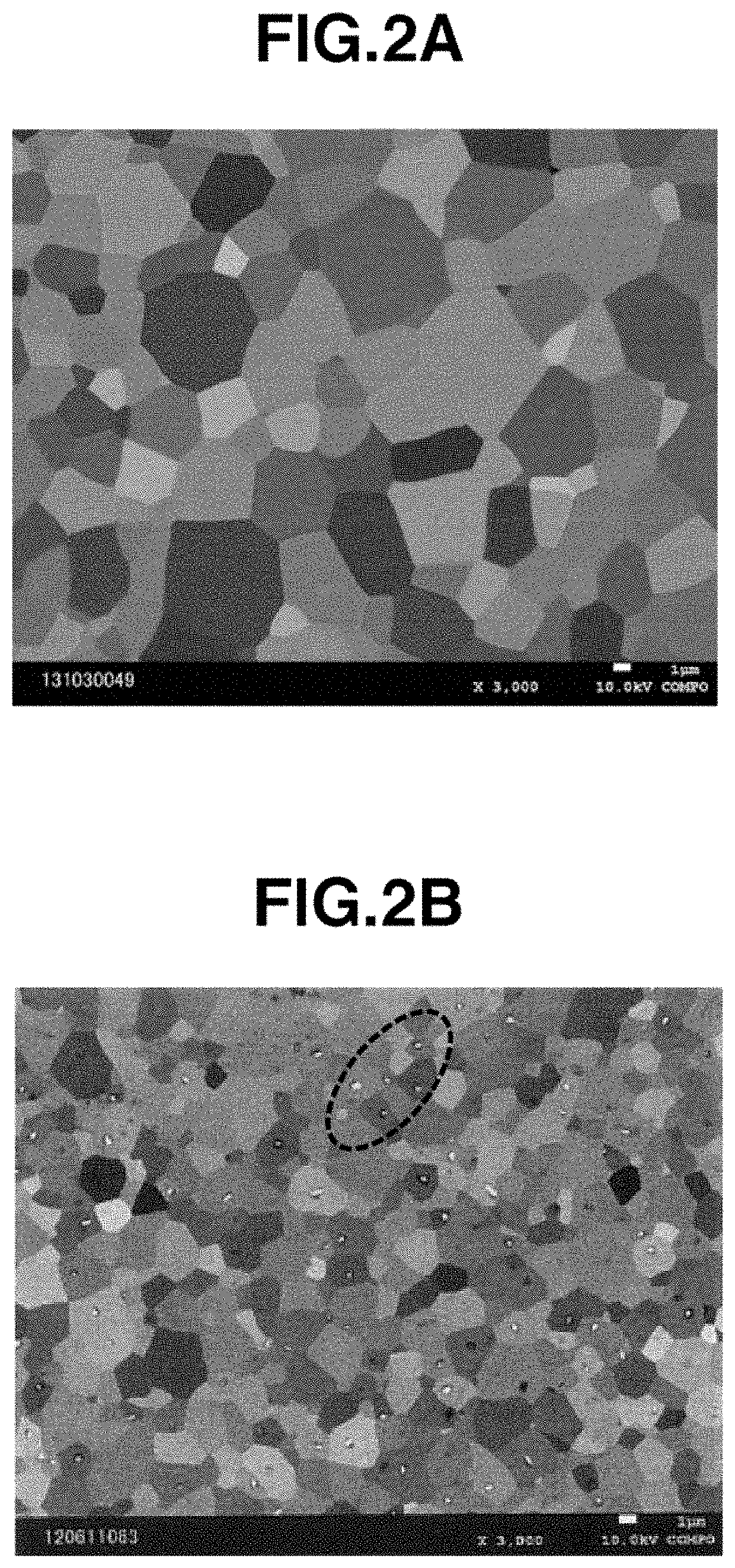Method for producing transparent ceramic, transparent ceramic, magneto-optical device and rare earth oxide powder for sintering
a technology of rare earth oxide powder and transparent ceramic, which is applied in the direction of lanthanide oxide/hydroxide, instruments, optical elements, etc., can solve the problems of reducing the extinction ratio, affecting the insertion loss, and insufficient blocking of return light, etc., to achieve better insertion loss characteristics, improve optical characteristics of transparent ceramics, and improve the effect of optical properties
- Summary
- Abstract
- Description
- Claims
- Application Information
AI Technical Summary
Benefits of technology
Problems solved by technology
Method used
Image
Examples
example 1
[0100]First, as starting materials for rare earth oxides, a terbium oxide powder (Tb2O3, purity: at least 99.9% by weight) and a yttrium oxide powder (Y2O3, purity: at least 99.9% by weight) made by Shin-Etsu Chemical Co., Ltd. were prepared, and were weighed such as to obtain a Tb2O3:Y2O3 molar ratio of 60:40. Further, as a starting material for a sintering aid, a zirconium oxide (ZrO2) powder (purity: at least 99.9% by weight) made by Daiichi Kigenso Kagaku Kogyo Co., Ltd. was weighed such as to obtain six levels of content in the range of 0.4 to 5.2 parts by weight, based on 100 parts by weight of the total amount of the rare earth oxides. These three starting materials, in the state of six kinds of mixed starting materials with the sintering aid content varied to six levels, were each dissolved in a 5N aqueous nitric acid solution.
[0101]Next, while stirring each of the resulting aqueous solutions, aqueous ammonia (NH4OH) was added dropwise thereto at a constant rate to neutraliz...
example 2
[0135]Sintered ceramic bodies were produced and subjected to evaluation in the same manner as in Example 1, except that hafnium oxide (HfO2) was used as the sintering aid and its content was varied to six levels.
examples 3-11
[0143]Rare earth oxide transparent ceramics containing terbium oxide were produced in the same manner as in Example 1, except that the starting materials and conditions were changed to those indicated in Table 7 to Table 15, and the transparent ceramics were subjected to measurement of optical characteristics such as insertion loss.
[0144]Examples 3 and 4 are examples in which the molar ratio of terbium oxide and yttrium oxide and the zirconium oxide content were changed from those in Example 1.
[0145]Examples 5 and 6 are examples in which the molar ratio of terbium oxide and yttrium oxide and the hafnium oxide content were changed from those in Example 2.
[0146]Example 7 is an example in which the molar ratio of terbium oxide and yttrium oxide was changed to 70:30 from the value in Example 1, and, further, titanium oxide (TiO2) was used as the sintering aid and its content was changed.
[0147]Example 8 is an example in which a combination of terbium oxide and lutetium oxide (Lu2O3) was ...
PUM
| Property | Measurement | Unit |
|---|---|---|
| angle | aaaaa | aaaaa |
| θ | aaaaa | aaaaa |
| insertion loss | aaaaa | aaaaa |
Abstract
Description
Claims
Application Information
 Login to View More
Login to View More - R&D
- Intellectual Property
- Life Sciences
- Materials
- Tech Scout
- Unparalleled Data Quality
- Higher Quality Content
- 60% Fewer Hallucinations
Browse by: Latest US Patents, China's latest patents, Technical Efficacy Thesaurus, Application Domain, Technology Topic, Popular Technical Reports.
© 2025 PatSnap. All rights reserved.Legal|Privacy policy|Modern Slavery Act Transparency Statement|Sitemap|About US| Contact US: help@patsnap.com


